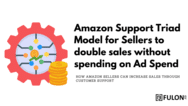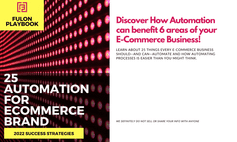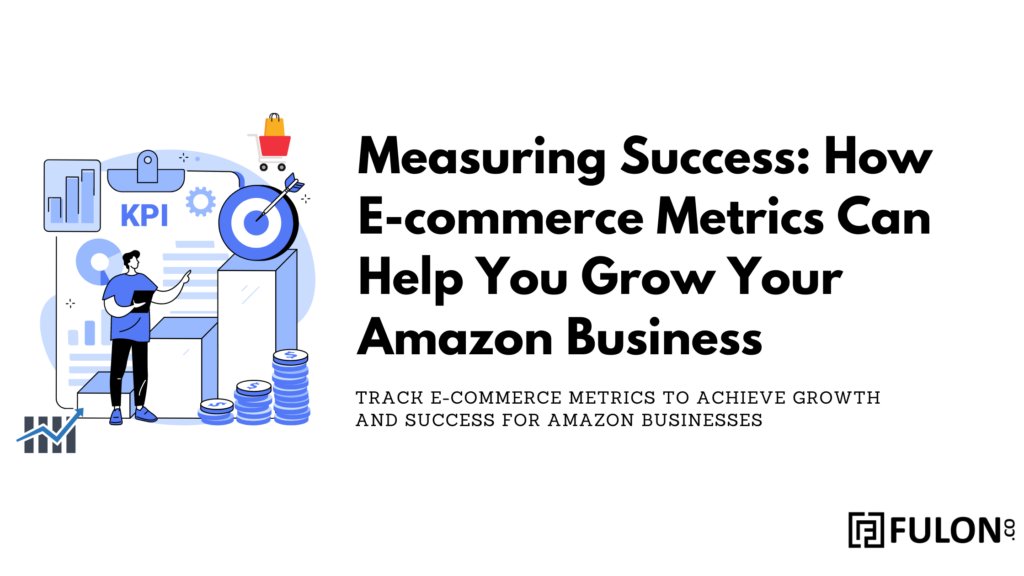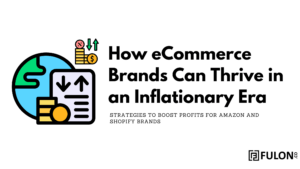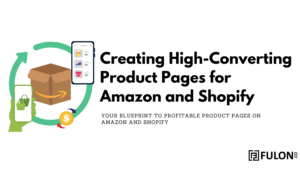Table of Contents
Introduction
Brands that conduct e-commerce on Amazon have access to a wealth of data that can be used to gauge success and expand their operations. For any Brand owner looking to advance their Amazon Brand, understanding and utilising e-commerce metrics is essential. In this blog post, we’ll look at the most crucial e-commerce metrics for Amazon Brands and how to use them to your advantage.
Metrics and Strategies for Successful Amazon E-commerce Sales
Tracking these metrics can be difficult, but we have seen firsthand how they can help your business grow. We have helped our clients achieve their business goals and take their Amazon business to the next level by tracking these metrics on a regular basis. You can gain insights into your customers’ behaviour, identify areas for improvement, and tailor your marketing strategies to boost sales and customer loyalty by regularly monitoring your metrics.
Here are the 22 e-commerce metrics that every Amazon seller should be aware of:
-
Sales - Total sales revenue generated Total sales revenue generated
Indicates the growth and success of a Brand and helps in tracking performance over time. It helps in the identification of trends and patterns and can be used to adjust pricing, marketing strategies, and sales tactics.
-
Total Buyers The number of unique customers who made a purchase
Helps in determining market size and potential, as well as informing marketing and advertising strategies. Helps identify new opportunities for growth and expansion, and can be used to develop targeted marketing campaigns and improve customer acquisition strategies
-
Repeat Buyers Customers who have made multiple purchases
Indicates customer loyalty and helps in the identification of upselling and cross-selling opportunities.Helps identify the most valuable customer segments for the Brand, which can then be used to develop targeted marketing campaigns and retention strategies.
-
Real Customer Contacts Customer contact information that is up to date and accurate
Helps in the development of customer relationships and the support of targeted marketing efforts. Allows Brands to communicate directly with customers, promote new products, provide exclusive deals and discounts, and build brand loyalty.
-
Total Customer Returns Number of products returned by customers
Helps in the identification of product quality issues and informs product development and customer service efforts. Allows Brands to improve product quality, customer service, and customer satisfaction while also reducing future returns and negative reviews.
-
Total Orders Total number of orders placed by customers
Helps in the tracking of Brand performance over time and the identification of trends and patterns. Helps in the identification of the busiest sales periods, peak and low seasons, and informs inventory management, pricing, and marketing strategies.
-
Average Number of Orders Average number of orders per customer
Helps in determining customer loyalty and repeat Brand, as well as identifying opportunities for upselling Allows Brands to target specific customer segments with marketing and retention strategies, as well as identify the most valuable customers.
-
Customer Retention Rate Percentage of customers who return to buy again
Customer loyalty and the effectiveness of retention strategies are indicated. Helps in the identification of retention issues and opportunities for improvement, as well as the support of targeted retention campaigns and offers.
-
Median CLV Median customer lifetime value
Helps in the identification of the most valuable customers and informs marketing and retention strategies. Allows Brands to focus on high-value customers while helping in the identification of retention, cross-selling, and upselling opportunities.
-
Average CLV Average customer lifetime value
Helps in the identification of overall customer value and supports marketing and retention strategies. Allows Brands to adjust marketing and retention strategies based on the overall value of their customer base, helps in the identification of growth and expansion opportunities.
-
Median AOV Median average order value
Helps in identifying buying patterns and preferences, as well as informing pricing and marketing strategies. Allows Brands to identify revenue-boosting opportunities such as pricing, bundling, and cross-selling.
-
Average AOV Average order value
Helps in determining overall revenue and informing pricing and marketing strategies. Allows Brands to adjust pricing and marketing strategies based on overall revenue, helps in the identification of growth and expansion opportunities.
-
Median AOV from first-time buyers Median average order value from first-time buyers
Helps in identifying buying patterns and preferences among new customers, as well as informing pricing and marketing strategies. Allows Brands to change their pricing and marketing strategies in order to attract new customers and improve overall customer acquisition strategies.
-
Median AOV from repeat buyers Median average order value from repeat buyers
Helps in identifying buying patterns and preferences among repeat customers, as well as informing pricing and marketing strategies. Allows Brands to change their pricing and marketing strategies in order to increase repeat Brand and customer loyalty.
-
Average days between orders The average number of days between two consecutive orders placed by the same customer.
It indicates how frequently a customer returns to the brand to make a purchase, which can provide insights into customer loyalty and repeat purchase behaviour. It can be used to determine the frequency of repeat customers and how frequently the brand must engage with these customers in order to drive repeat purchases.
-
Median days between orders The middle value of the number of days between two consecutive orders placed by the same customer
When compared to the average, it is a more representative measure of the typical time between repeat purchases.It can be used to determine the average time between repeat purchases, which may help in determining the best frequency of marketing campaigns or promotions to drive repeat purchases.
-
Revenue by sales channel The total revenue generated by each sales channel used by the brand, such as Amazon, Shopify, etc.
It identifies which sales channels are the most profitable and which need to be optimised or scaled. It can be used to identify the best-performing sales channels in order to allocate more resources to them, as well as to optimise or scale underperforming channels.
-
Customer Segmentation A classification system that segments customers into different categories based on their behavior, such as Lost customer, New customer, Promising, Loyalist, Big spender, and Champion
It helps in understanding the various types of customers and their behaviour, allowing marketing campaigns and promotions to be tailored to each segment. It can be used to identify the different types of customers and tailor marketing campaigns and promotions to each segment to drive engagement and repeat purchases.
-
Sales by Week Days A table that shows the total sales for each day of the week
It identifies the most profitable days of the week for the brand and may help in the optimisation of marketing campaigns and promotions. It can be used to determine the most profitable days of the week and to optimise marketing campaigns and promotions for those days.
Maximize Customer Value with Data-Driven RFM Analysis

RFM analysis is a powerful tool for brands looking to improve their customer base and marketing and sales efforts. RFM stands for Recency, Frequency, and Monetary, which are three key parameters that can assist businesses in determining which customers are most likely to respond to future marketing campaigns.
Brands can segment their customer base and tailor their marketing strategies to better engage each segment by analysing these parameters.
-
Recency analysis A rating system that assigns a score from 1-5 based on how recently a customer has made a purchase, with 5 being the most recent
It offers insights into customer engagement and loyalty and can assist in identifying customers who may need to be re-engaged. It can be used to segment customers based on their most recent purchases and target them with personalised campaigns or promotions to encourage repeat purchases.
-
Frequency analysis A rating system that assigns a score from 1-5 based on how frequently a customer has made a purchase, with 5 being the most frequent
It can help identify which customers are most likely to become repeat purchasers by providing insights into customer loyalty and repeat purchase behaviour. It can be used to segment customers based on frequency scores and then target them with personalised campaigns or promotions to encourage repeat purchases.
-
Monetary analysis A rating system that assigns a score from 1-5 based on how much money a customer has spent, with 5 being the highest-spending customers
It reveals which customers are the most valuable to the brand and which need to be re-engaged or upsold. It can be used to segment customers based on their financial scores and then target them with personalised campaigns or promotions in order to drive repeat purchases or upsell to higher-priced products.
With a commitment to measuring success, you can take your Amazon business to the next level.

If you’re an Amazon business owner looking to drive success, start by tracking the most important ecommerce metrics. Utilize tools like Fulon to gather and analyze data, and experiment with different strategies to see what works best for your business.
Real-world examples of businesses that have used RFM analysis to increase customer engagement, drive sales, and boost revenue can serve as inspiration. Learn how RFM has been successfully implemented in various industries and how you can apply these insights to your own business.
Summary
To summarise, measuring e-commerce metrics is vital for any Amazon Brand looking to grow and succeed. Brands that track these metrics can identify areas for improvement, effectively segment their customers, and make data-driven decisions to drive growth. Using e-commerce metrics necessitates a commitment to analysing data and experimenting with various strategies in order to find the most effective path forward.


